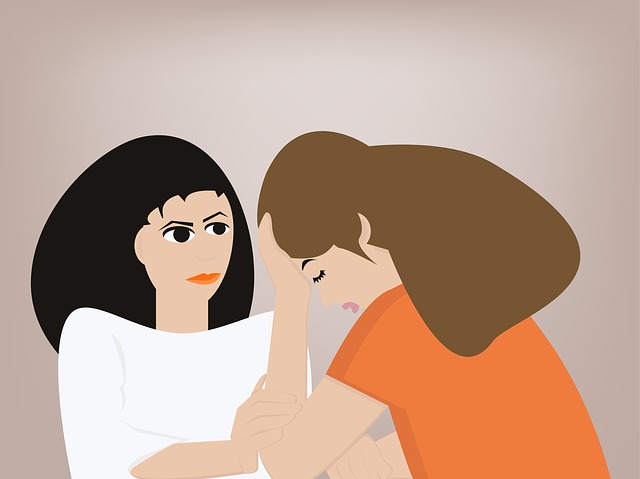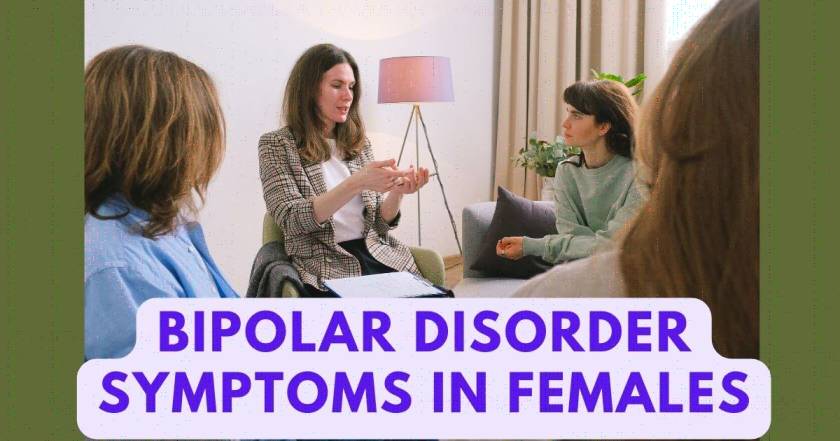Bipolar disorder, formerly known as manic depression, is a mood disorder characterized by extreme shifts in mood and behavior from manic highs to depressive lows that make it difficult to function normally. Bipolar disorder has been identified as one of the top ten leading causes of disability in the United States, affecting nearly five million adults every year. Unfortunately, bipolar disorder has been found to be even more prevalent in women than men, with approximately twice as many women being diagnosed with the illness than men.
Diagnosing Bipolar Disorder
There are various bipolar disorder symptoms that can be easy to miss. However, some of these symptoms will also look like other mental health conditions and/or medical problems. If you suspect that someone is experiencing bipolar disorder or another mental health condition, it’s important not to leave them alone, but instead get them professional help right away. The most common way people are diagnosed with bipolar disorder is by getting an evaluation by a psychiatrist.
Family doctors, friends and loved ones can also alert someone with possible signs of bipolar disorder to a mental health specialist who can make a diagnosis. It’s always a good idea to seek out as much information about bipolar disorder as possible so that you can take better care of yourself or your loved one if they’re suffering from bipolar disorder.
A person with bipolar disorder should work closely with their doctor to develop a treatment plan based on their individual needs, including medications for bipolar disorder. Medications for bipolar disorders, such as lithium carbonate (Eskalith), carbamazepine (Tegretol) and valproic acid (Depakote), are usually very effective at controlling mood swings when taken regularly—although there may be side effects depending on which medication is prescribed.
Identifying Early Signs of Bipolar Symptoms
One of the most important things you can do for yourself is learning how to identify early signs of bipolar disorder. If you have a family history of bipolar disorder, it’s even more important that you pay attention. Women and men can experience similar symptoms, but there are differences. For example, women tend to become depressed rather than angry when going through mood swings. They also often suffer from anxiety as well as depression during their depressive episodes. They also may experience rapid cycling—where they go from one extreme to another (for example, from mania to depression) without any period of normalcy in between. This can be especially difficult because they may not realize what is happening until it has already happened.
Rapid cycling may occur several times within one day or over several days or weeks with no break between them. If you recognize these symptoms in yourself or someone close to you, take action right away and seek help before a full-blown episode occurs. You should also watch out for co-occurring disorders such as substance abuse or eating disorders, which often occur alongside bipolar disorder and make treatment much more difficult.

10 Bipolar Disorder Symptoms in Females
The first step towards treating bipolar disorder in women is being able to recognize some of its symptoms.
Here are the ten bipolar disorder symptoms in women.
- Inflated self-esteem or grandiosity
- Decreased need for sleep
- More talkative than usual
- Racing thoughts
- Distractibility
- Increase in goal-directed activity
- Feeling “high”
- Excessive involvement in pleasurable activities that have a high potential for painful consequences
- Spending sprees
- Frequent episodes of depression
Bipolar disorder may also be accompanied by other mental health issues, such as anxiety disorders, panic attacks, obsessive compulsive disorder (OCD), eating disorders, substance abuse problems, attention deficit hyperactivity disorder (ADHD), or post-traumatic stress disorder (PTSD). It’s important to get professional help if you think that you might be suffering from any of these symptoms! For more information on how to treat bipolar disorder, check out our section on Bipolar Disorder Treatment Options below!
What causes a Woman to Have These Symptoms?
The answer is a bit complicated. For starters, women with bipolar disorder have more than double the risk of suicide compared to their male counterparts. As a woman, you also have higher rates of comorbidity and are more likely to experience your first episode of mania at an earlier age compared to men. On top of all that, you suffer from higher levels of anxiety and depression overall—which makes identifying bipolar disorder even harder.
So what’s going on? A combination of hormonal differences and social factors may explain why bipolar disorder symptoms in females are often so different from those experienced by males. It could be as simple as hormones or as complex as societal pressures. But one thing is clear: It’s important for doctors to look beyond typical bipolar disorder symptoms in order to properly diagnose and treat female patients. The good news is that once diagnosed, bipolar disorder treatment options for women can be very effective if they are paired with proper psychotherapy.
Diagnosis and Treatment Options for Women with this Disorder
There are two important facts you should know about bipolar disorder and women. Firstly, bipolar disorder is often misdiagnosed as depression, especially in women; secondly, bipolar disorder is also treated differently between men and women. In most cases, diagnosis is essential for getting rid of symptoms for good—it’s generally not a one-size-fits-all approach to treatment.
There are dozens of treatment options available; however, medications can have serious side effects that range from headaches and gastrointestinal issues to thoughts of suicide. If you or someone you know has bipolar disorder, it’s vital that you speak with a medical professional about treatment options as soon as possible. This condition requires constant attention and care, so you don’t end up slipping into another depressive episode.
4 Things You Should Know About Living with This Condition
Bipolar disorder symptoms can be challenging, and they may be even more so for women. However, there are ways to manage it successfully. Those living with bipolar disorder need to know how to spot these signs of bipolar disorder in women and seek help when needed.
The following four tips can help you live better with your bipolar disorder symptoms.
1. Seek treatment from a mental health professional who specializes in bipolar disorder.
2. Finding a doctor who understands your condition is essential. Many people suffering from manic episodes have depression too, so make sure you get a proper diagnosis before trying to treat yourself or making changes to your lifestyle.
3. Keep track of your moods and behavior patterns. It’s also important that you track what triggers your episodes, as well as other symptoms, such as trouble sleeping or increased activity levels.
4. Keeping an accurate record will help you find trends that could point toward new triggers or warning signs that something might be wrong before it gets out of hand.
How does a bipolar woman act?
If you notice your loved one is going through extreme ups and downs of mood, energy, and behavior that are drastically different from her normal behavior patterns, it may be a sign of bipolar disorder. A woman with bipolar disorder will experience two or more periods of mania (defined as elevated, hyperactive or irritable mood) and/or depressive episodes (depressed mood for most of the day) lasting at least one week in any given year. About 10% of people with manic depression are female. It can start at any age between 15-30, but usually starts before 20.
The prevalence increases with age, so by 45 years old about 25% of sufferers are women. Women tend to have their first episode earlier than men, have longer and more frequent episodes throughout their lives, and are less likely to recover fully after an episode. Women also tend to suffer from anxiety disorders such as panic attacks or obsessive compulsive disorder (OCD). They often suffer from other mental health problems such as eating disorders like anorexia nervosa or bulimia nervosa. These conditions occur when they don’t get enough food due to their illness, causing them not to eat properly, or when they try too hard not to gain weight during recovery. They also suffer higher rates of self harm than men do; about 30% of those who commit suicide are women who have suffered from bipolar disorder.
How do you deal with a bipolar woman?
Is your significant other prone to mood swings? Don’t worry, you’re not alone. The condition known as bipolar disorder (once called manic depression) is most common among women during their reproductive years. About 2.6 percent of women experience some form of bipolar disorder, compared with 1.2 percent of men, according to data from a large survey conducted by researchers at Harvard Medical School and published in a 2012 issue of JAMA Psychiatry. That’s about one woman for every 13 men—and doesn’t include those who are undiagnosed or never diagnosed because their symptoms tend not to be as obvious as those found in men.
Bipolar disorder can cause drastic shifts in a person’s mood, energy level and ability to function on a daily basis. It also tends to run in families, so if you have it, there’s a good chance that others close to you do too. Here are some things all partners should know about dealing with someone who has bipolar disorder.
Bipolar Disorder Symptoms in Females Test
Medication is only one part of bipolar disorder treatment, but it’s a critical part. If you experience bipolar disorder symptoms, whether they occur in men or women, talk with your doctor about what medication might work best for you. Certain medications can be more effective than others, depending on your needs and personal preferences. Additionally, make sure you take all medications as directed by your doctor; an improper dosage could be harmful to your health and your mental wellbeing.
If you start feeling better while taking medication and having regular therapy sessions, consider staying on that regimen—but know that it may take time before any of these actions are reflected in positive changes in your mood. If you feel like you aren’t getting better after trying several treatments, speak with your doctor again. He or she will likely recommend changing up some of your routines (such as adding another type of medication) to find something that works well for you. Remember, there is no one size fits all approach when it comes to treating bipolar disorder symptoms in females.
Bipolar Disorder Treatment
According to a study by Harvard Medical School, nearly 7.7 million adults with bipolar disorder were treated with medications for their condition. While these drugs can help control symptoms, they may also cause side effects that make it difficult for those who take them to carry out day-to-day tasks. When left unchecked, these issues can cause problems like memory loss and dangerous drowsiness that can lead to accidents and other potentially serious problems. That’s why it’s important for anyone with bipolar disorder or any other mental health issue to carefully monitor all changes taking place within their body as they move through treatment.
In fact, many experts recommend seeing a doctor regularly—at least once every three months—for routine checkups throughout your journey. This way, you can quickly spot any warning signs of potential problems before they get too bad. And if you do notice something unusual during one of your visits, don’t be afraid to bring it up! Your doctor will likely want to run some tests so he or she can determine what is causing your symptoms and find ways to help you manage them more effectively.
Medication for Bipolar Disorder
One of the most difficult aspects of bipolar disorder is finding an effective treatment plan that helps stabilize your mood and keep manic episodes at bay. With so many available medication options, it can be hard to know where to start. At present, there are four primary medications approved by the FDA for treating bipolar disorder: lithium, divalproex sodium (Depakote), olanzapine (Zyprexa), and quetiapine fumarate (Seroquel). They work very differently, but all have been shown effective in helping people with bipolar symptoms control their condition. While no single medication works perfectly for everyone, it’s important not to give up too soon—the right drug might just take a while to find its way into your system. Keep trying until you feel like you’ve found what works best for you.








